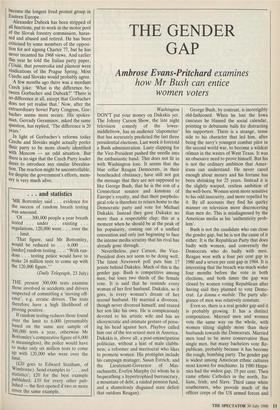. . . and statistics
`MR Bottomley said . . . evidence for the success of random breath testing was unsound.
`Of . . . 300,000 people a year breath tested . . . under . . . existing . . . regulations, 120,000 were . . . over the • . . limit.
`That figure, said Mr Bottomley, would be reduced to . . . 6,000 . . . [under] random testing . . .: "With ran- dom . . . testing police would have to make 24 million tests to come up with the 120,000 figure."' (Daily Telegraph, 23 July) THE present 300,000 tests examine those involved in accidents and drivers suspected of committing a 'moving off- ence', e.g. erratic drivers. The tests therefore have a high likelihood of proving positive.
If random testing reduces those found over the limit to 6,000 (presumably based on the same size sample of 300,000 tests a year, otherwise Mr B. ottomley's comparative figure of 6,000 is meaningless), the police would have to make only six million tests to come up with 120,000 who were over the limit.
(L20 goes to Edward Stanham, of Wimborne). Send examples to `. . . and statistics'; £20 for the best example published; £10 for every other pub- lished — the first opened if two or more cover the same example.














































 Previous page
Previous page